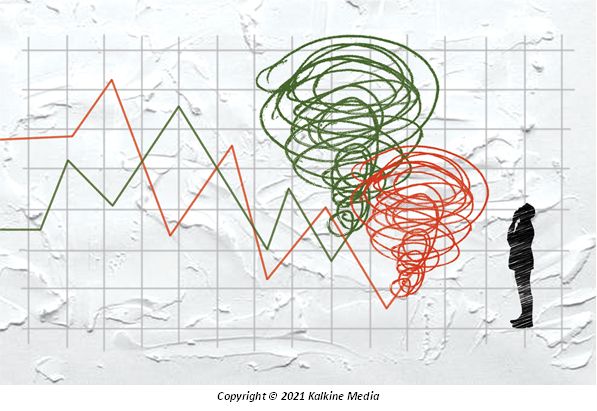Definition
Related Definitions
Seasonally Adjusted Annual Rate (SAAR)
What is Seasonally Adjusted Annual Rate (SAAR)?
Seasonally adjusted annual rate (SAAR) is a rate adjustment to financial and economic data that accounts for seasonal changes in data that occur over the time. It's a statistical approach for smoothing out periodic fluctuations in data owing to seasonal effects, such as supply and demand.
The adjustments made to seasonal data would imply that more accurate and reliable relative comparisons can be drawn for different periods.
Summary
- Seasonally Adjusted Annual Rate (SAAR) is an adjustment used when comparing distinct kinds of statistical data.
- It accounts for value variations in data that may arise owing to seasonality.
- Seasonality refers to seasonal variations that frequently happen in certain business areas and periods in a special season.
- SAAR makes the data reliable and accurate while helping in making data comparisons easier.
- A company/investor can make more dependable and accurate comparisons across various periods by adjusting data influenced by seasons.
Frequently Asked Questions (FAQ)-
What is the seasonality of data?
Seasonality refers to seasonal fluctuations in certain business sectors and phases that occur regularly during a given season. For example, a calendar season (summer/winter), or a commercial season (the Christmas season) are examples of seasons. Other seasonal events include weather, harvests, school schedules, etc.
Companies that identify the seasonality of their operations may plan and schedule inventory, employment, and other choices.

Seasonality is significant when assessing stocks from a fundamental viewpoint since it can have a major influence on an investor's profits and assets. A company with large number of sales in specific seasons may look as if the company is earning huge gains in peak seasons and making significant losses during off-peak seasons.
If this isn't considered, an investor may decide to purchase or sell stocks based on the operation at hand. As a result, the seasonal change that occurs as part of the firm's seasonal business cycle is not taken into account.
How to calculate SAAR?
SAAR is derived by multiplying the unadjusted monthly projection by the total number of months in a year and multiplying by the seasonal factor.
Seasonal factor — To calculate the seasonal factor, you'll need full-year data from which to compute an average monthly or quarterly figure. The yearly average monthly or quarterly figures are then divided by the monthly or quarterly number (unadjusted).
Example: A company created 2400000 metal sheets in a year and 15000 in June. Hence, the seasonal factor for June is 15000/(2400000/12)= 0.75
Is seasonal adjustment always needed?
Seasonal adjustment isn't always necessary or suitable. Seasonally adjusting a series that does not have a discernible seasonal trend or other calendar-based factors is not essential. When the raw estimate depicts the actual statistic of interest, it's also not always a good idea to utilise seasonally adjusted data.

One example of this is that decisionmakers who use Consumer Price Index (CPI) for indexation reasons utilise unadjusted data since it reflects actual price fluctuations from period to period. However, seasonally adjusted indices are recommended for data users concerned with analysing underlying pricing patterns in the economy.
When it comes to analysing time series data, the goal is to figure out the overall pattern of the data, the long-term trends, and if any unexpected events have had a significant impact on the series. For this, seasonally adjusted data is required to get rid of any seasonal effects in the data. This kind of analysis is more difficult in raw time series data since there are usually short-term effects related with the time of year that hide or contradict other factors.
What is the importance of SAAR?
SAAR can prove to be useful in many ways. Some of them are as follows:
- Captures seasonal fluctuations
SAAR is an essential data metric as it considers seasonal changes all through the data period. When attempting to extrapolate individual data points to anticipate yearly outcomes, it is critical to account for seasonal changes since they may not reflect the actual picture; seasonality's boom or bust may influence an individual month's results. SAAR eliminates these effects.
- Facilitates comparisons
SAAR is also crucial since it makes data comparisons simpler. In the case where raw data is not altered, it is not possible to compare it between different periods or enterprises. Adjusting the data and getting rid of seasonal fluctuations makes comparing data from different eras and firms simpler while allowing more reliable findings.
- Improves data accuracy and dependability
By accounting for seasonal changes and modifying data accordingly, SAAR enhances the data's reliability and accuracy. This results in providing a more accurate financial and/or economic picture.
- Assists in making well-informed judgments
The SAAR assists in making educated business choices by removing the seasonal influence on the company data. It helps in making decisions by giving a more accurate financial picture.
